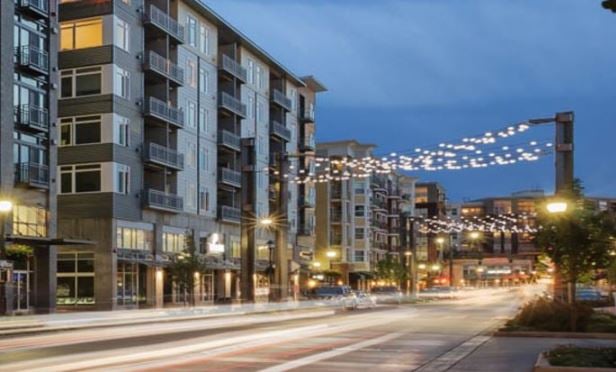BUENA PARK, CA—As more young people are receiving higher education and are attracted to cities, fewer are entering the industrial labor pool, making increased automation a necessity for distribution centers, John C. Morris, Cushman & Wakefield's industrial services lead, Americas, tells GlobeSt.com. Morris says this phenomenon, combined with e-commerce, is making automation more prevalent for manufacturers.
As GlobeSt.com reported last week, Cushman & Wakefield facilitated the signing of a new, 191,000-square-foot lease at 6300 Valley View St. here between tenant Manhattan Beachwear and an undisclosed owner. The long-term lease consolidates three existing locations into one for the women's swimwear manufacturer, which is reexamining its processes to become more efficient in its distribution capabilities. Here, more from our interview with Morris about the transaction and changes in distribution space utilization.
GlobeSt.com: Are manufacturers in general changing their processes to become more efficient in the wake of e-tailing?
Morris: First of all, yes. In the last four to five years, the amount of material-handling capital deployed per square foot of warehouse has been rising significantly, and quite a bit of that is about e-commerce. In the case of Manhattan Beachwear, it may be all about e-commerce. They had been looking to do better with their storage and handling processes.
But it's a bigger picture than to just cite e-commerce as the entire reason why storage and handling processes have been improving and more heavily automated. The primary change is how the economy and job market are changing for industrial labor. We do see more and more young people living in the city, and they're attracted to urban, more-expensive environments. When you combine urbanization with an increasing level of college education, college graduates and urbanely living young professionals are not going to take industrial jobs for the most part. So, the employment pool for Manhattan Beach and other shippers has been declining. When the labor pool is declining and costs are rising, the only answer is to add capital to your facility in order to become more productive.
All of this is about shifting labor markets, but certainly the other key driver is e-commerce, which is picking one single item at a time for each customer instead of multiple items at a time for a store. We used to need warehouses to pick a palletful of goods and send it to a store, which involves not as much automation as picking a single item—a pair of shoes, a swimsuit—for one single person and sending it to their facility. Those kinds of high-unit-cost warehouses require and justify significant amounts of capital. The companies are spending a significant amount, but the ROI is positive.
GlobeSt.com: Are these changes making an impact on their real estate choices?
Morris: I think so. When you can more effectively deploy automation capital into a facility, two things can happen: You can go higher, so your opportunity to use clear height increases the more you automate. Also, the buildings themselves from a structural perspective require a little more power and steel—they're stronger and more-powerful buildings. And I do think that when you can automate a facility and rely less on people, there's an opportunity overall to fit more inventory into the facility, so it's a much better cube. It's automated, higher and bigger depending on their needs. What's making their buildings bigger is that square footage is in the distribution center instead of a storeroom.
GlobeSt.com: What other changes do you notice in how manufacturers and distributors are leasing space?
Morris: Another big thing that's happening is the ratio of construction that is built to suit. Five years ago, spec construction was five times as large as build-to-suit construction, and in the last couple of years the ratio has been much closer to 1 to 1. These facilities are very customized and specific in use. More and more shippers these days, product companies, will want a building to be built specifically for them,so we can all expect build-to-suits will represent a significant amount of new construction-about 50% of new construction overall.
© 2025 ALM Global, LLC, All Rights Reserved. Request academic re-use from www.copyright.com. All other uses, submit a request to [email protected]. For more information visit Asset & Logo Licensing.






